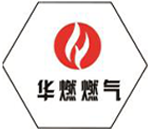
Oct . 17, 2024 11:51
Back to list
Understanding the Functionality and Applications of Cyclone Separation Technology
Understanding Cyclone Separators A Key Technology in Dust Control
In various industrial processes, the control of dust and particulate matter is crucial not only for maintaining air quality but also for ensuring equipment efficiency and worker safety. Among the numerous technologies available today for particulate separation, cyclone separators stand out due to their simple design, robustness, and effectiveness. This article explores the working principle, applications, and advantages of cyclone separators.
Working Principle
Cyclone separators operate based on the principles of centrifugal force and inertia. When a mixture of air and particulates enters the cyclone, it is directed tangentially into a cylindrical or conical chamber. This tangential entry creates a spiraling motion within the chamber. As the mixture rotates, the heavier particulate matter is forced outward due to centrifugal force and strikes the inner walls of the cyclone. This interaction causes the heavier particles to lose momentum, allowing them to descend to the bottom of the cyclone separator where they are collected in a hopper.
Conversely, the lighter particles and cleaner air move toward the center of the cyclone and exit through the top outlet. The efficiency of a cyclone separator in removing particulate matter largely depends on the design parameters, including the diameter, height, and the inlet dimensions, as well as the flow rate of the gas and the specific gravity of the particles.
Applications
Cyclone separators are widely used across various industries, including cement, food processing, pharmaceuticals, and mining. They are particularly effective in situations where bulk handling of dry particles is involved. For instance, in cement production, cyclone separators help to collect and avoid the loss of fine powder, thereby enhancing product recovery and minimizing the environmental impact of dust emissions.
cyclone separator

In the food industry, cyclone separators are employed to ensure that any fine particulate that may contaminate the products is effectively removed. This ensures food safety and adheres to strict regulatory standards. Additionally, in industries like pharmaceuticals, where purity is paramount, cyclone separators assist in maintaining a clean production environment by removing over 90% of airborne particulates.
Advantages
One of the major advantages of cyclone separators is their low operational cost. They have no moving parts, which translates to lower maintenance requirements compared to other dust collection systems like filters or baghouses. This inherent simplicity also means that they can be easily integrated into existing systems without extensive modifications.
Another benefit is their scalability. Cyclone separators can be designed in various sizes, making them suitable for small workshops as well as large industrial plants. They also exhibit flexibility in operation, providing effective dust collection for diverse materials and particle sizes.
Moreover, cyclone separators generally have a higher throughput capacity than alternative systems. They can handle large volumes of gas and particulate matter efficiently, making them ideal for facilities with high dust loads. The high efficiency in separating particles also leads to reduced emissions and can aid companies in meeting environmental regulations more easily.
Conclusion
In conclusion, cyclone separators represent an essential technology for effective dust control and particulate separation in numerous industries. Their operational efficiency, low maintenance costs, and versatility make them a preferred choice for many industrial applications. As industries continue to prioritize environmental sustainability and worker safety, the role of cyclone separators in helping achieve these goals becomes increasingly significant. With ongoing advancements in design and technology, the effectiveness of cyclone separators is likely to improve, further solidifying their position in the field of particulate control.
Next:
Latest news
-
Safety Valve Spring-Loaded Design Overpressure ProtectionNewsJul.25,2025
-
Precision Voltage Regulator AC5 Accuracy Grade PerformanceNewsJul.25,2025
-
Natural Gas Pressure Regulating Skid Industrial Pipeline ApplicationsNewsJul.25,2025
-
Natural Gas Filter Stainless Steel Mesh Element DesignNewsJul.25,2025
-
Gas Pressure Regulator Valve Direct-Acting Spring-Loaded DesignNewsJul.25,2025
-
Decompression Equipment Multi-Stage Heat Exchange System DesignNewsJul.25,2025

